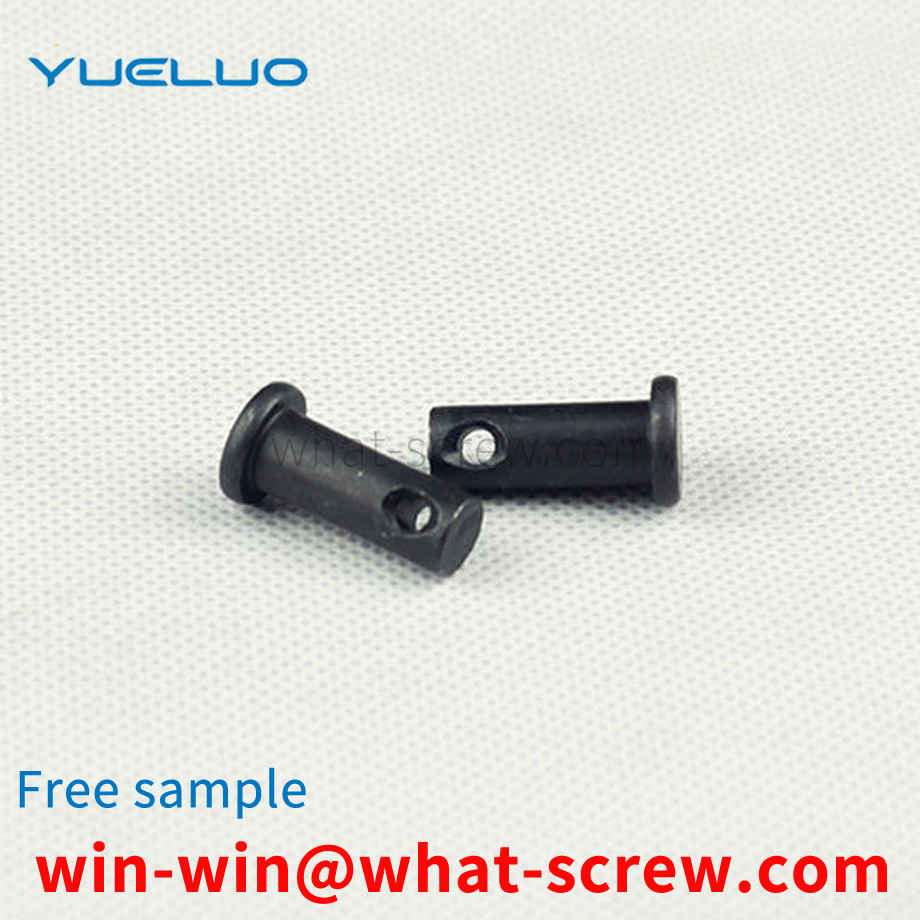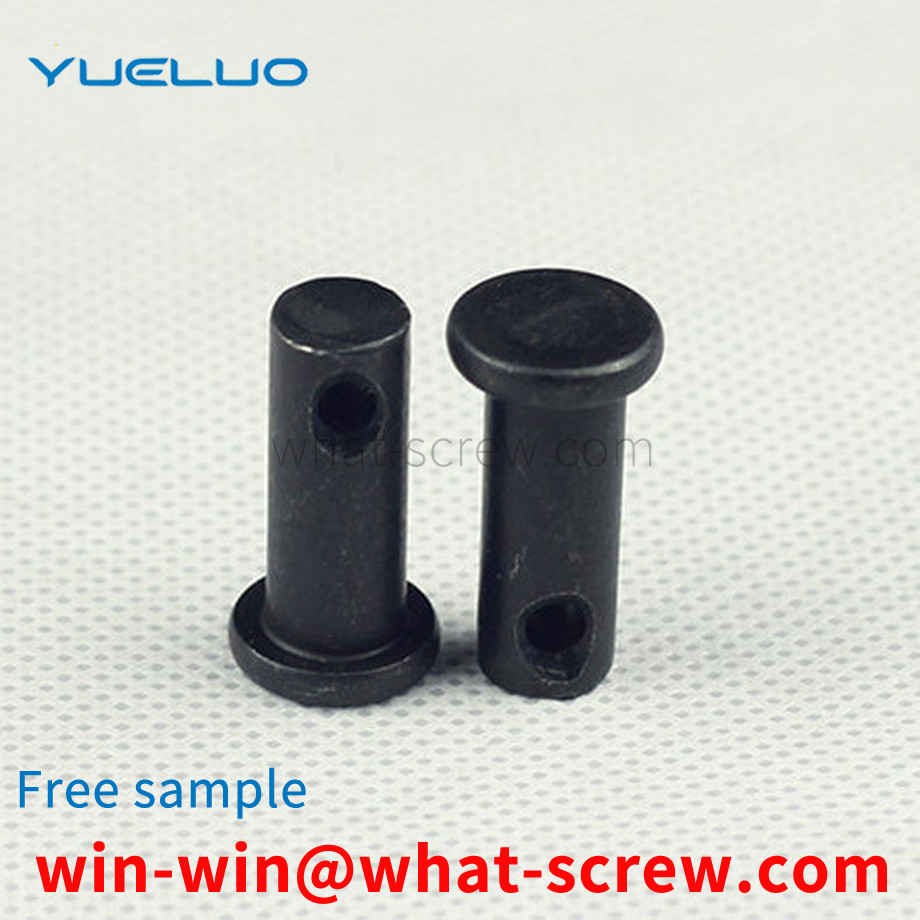At present, the nut is used as the main body through the riveting connection with the gasket, which is more and more widely used in the industrial field, especially the automobile industry. The gasket connected with the nut has two types: spring gasket and flat gasket. After the nut is tightened, the washer gives the nut an elastic force, which is pressed against the nut to make it not easy to fall off; and the function of the flat washer is to increase the contact area between the nut and the coupling, increase the friction force, reduce the pressure per unit area and protect the surface of the connected parts. Not damaged, stop the nut from loosening. Therefore, gaskets have a wide range of applications in the field of fastening connections, and it is more and more important to improve production efficiency, reduce production costs, and meet growing demands.
In all kinds of machines and equipment, the various parts are fixed and assembled by bolts and nuts. However, after the machine and equipment are used for a period of time, the bolts and nuts will become loose, which will bring great safety hazards to the use of the machine and equipment. For this reason, when bolts and nuts are used for connection, a spring washer is installed between the nut and the connected part. The spring washer is in the shape of a circular ring, and the ring is not closed, and is sleeved on the bolt. The addition of the spring washer has a certain anti-loosening effect, but it can only prevent the nut from rotating relative to the bolt. In the case of large vibration of the machine, the bolt will rotate relative to the connected part.
The nut specification table is to unify all kinds of nuts in detail, and use the table to subdivide some specifications of the nuts. There are many types of nuts, and there are nuts of different materials. Each type of nut has different specifications, and each type of screw also has its mechanical properties and functions. · Square nut grade C GB 39-88 · Hexagonal nut grade C GB /T41-2000 · Hexagonal thick nut GB 56-88 · Wing nut GB 62-88 · Ring nut GB 63-88 · Combined cap nut GB 802 -88 · Spherical Hex Nut GB 804-88 · Fastening Nut GB 805-88 Knurled High Nut GB 806-88 · Knurled Thin Nut GB 807-88 · Small Hexagonal Extra Flat Fine Thread Nut GB 808-88 · Embedded Round nut GB 809-88 · Small round nut GB 810-88 · Round nut GB 812-88 End hole round nut GB 815-88 · Side hole round nut GB 816-88 · Slotted round nut GB 817-88 · Type 1 non-metallic insert hexagonal lock nut GB /T 889.1-2000 · Type 1 non-metallic insert hexagonal lock nut with fine thread GB /T 889.2-2000 · Cap nut GB 923-88 · Type 1 hexagonal nut GB / T 6170-2000 · Type 1 Hexagonal Nuts with Fine Thread GB /T 6171-2000 · Hexagonal Thin Nuts GB /T 6172.1-2000 · Non-metallic Insert Hexagonal Locking Thin Nuts GB /T 6072.2-2000 · Hexagonal Thin Nuts with Fine Pitch GB /T 6173-2000 · Hexagonal thin nuts without chamfer GB /T 6174-2000 · Type 2 hexagon nuts GB /T 6175-2000 · Type 2 hexagon nuts with fine pitch GB /T 6176-2000 · Hexagon flange nuts GB / T 6177.1-2000 · Hexagon flange face nuts with fine pitch GB /T 6177.2-2000 · Type 1 hexagon slotted nut - Grade A and B GB 6178-86 · Type 1 hexagon slotted nut - Grade C GB 6179-86 · 2 Type Hexagonal Slotted Nuts-A and B Grades GB 6180-86 Hexagonal Slotted Thin Nuts-A and B Grades GB 6181-86 Type 2 Non-metallic Insert Hexagonal Lock Nuts GB/T 6182-2000 Non-metallic Inserts Hexagon flange face lock nuts for non-metal inserts GB /T 6183.1-2000 · Non-metallic insert hexagonal flange face lock nuts with fine thread GB /T 6183.2-2000 · Type 1 all-metal hexagonal lock nuts GB /T 6184-2000 · Type 2 all-metal hexagonal lock nut GB /T 6185.1-2000 · Type 2 all-metal hexagonal lock nut fine pitch GB /T 6185.2-2000 · Type 2 all-metal hexagonal lock nut Grade 9 GB /T 6186-2000 · Full Metal Hexagon Flange Face Lock Nuts GB /T 6187.1-2000 · All Metal Six Angle flange face locking nut fine pitch GB /T 6187.2-2000 · Type 1 hexagon slotted nut with fine pitch A and B grades GB 9457-88 · Type 2 hexagonal slotted nut with fine pitch A and B grade GB 9458-88 · Hexagonal Slotted Thin Nut Fine Thread Grade A and B GB 9459-88 · Welded Square Nut GB /T 13680-92 · Welded Hexagonal Nut GB /T 13681-92 · Flat Head Rivet Nut GB /T 17880.1-1999 · Countersunk Head Rivet Nut GB /T 17880.2-1999 · Small countersunk head rivet nuts GB /T 17880.3-1999 · 120° small countersunk head rivet nuts GB /T 17880.4-1999 · Flat head hexagonal rivet nuts GB /T 17880.5-1999 · Hexagonal nuts for precision machinery GB /T 18195-2000
Stud bolts generally need to be surface treated. There are many types of bolt surface treatments. Generally, electroplating, blackening, oxidation, phosphating, and electroless zinc flake coating are commonly used. However, electroplated fasteners account for a large proportion of the actual use of fasteners. Especially in automobiles, tractors, home appliances, instrumentation, aerospace, communications and other industries and fields are more widely used. However, for threaded fasteners, not only a certain anti-corrosion capability is required in use, but also the interchangeability of threads must be ensured, which can also be called screwability here. In order to meet the dual-use performance of anti-corrosion and interchangeability required by threaded fasteners in use, it is very necessary to formulate special plating standards. [1] The GB/T5267.1-2002 [Threaded Fastener Electroplating Coating] standard is one of the national standards Fastener Surface Treatment series of standards, which include: GB/T5267.1-2002 [Fastener Electroplating Layer]; GB/T5267.2-2002 [Fastener electroless zinc flake coating] two standards. This standard is equivalent to the international standard ISO4042; 1999 [Threaded fastener electroplating layer]. This standard replaces the GB/T5267-1985 [Threaded Fastener Electroplating Coating] standard.
The side gear thrust washer used in the automobile differential is a flat washer, which is installed between the differential housing and the side gear to prevent the side gear from retreating. Due to the high-speed rotation of the side gear when the differential is working, it is necessary to ensure that the contact surfaces on both sides of the flat gasket are well lubricated.
We have many years of experience in the production and sales of screws, nuts, flat washers, etc. The main products are: GB812 nuts, rivet nuts, furniture screws, square iron washers and other products, we can provide you with suitable fasteners. Firmware Solutions.



















 Service Hotline
Service Hotline




